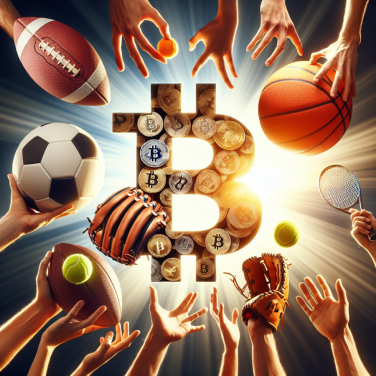From Sweat to Crypto: Exploring Cutting-Edge M2E Platforms in the Fitness Industry
As the intersection of fitness and technology evolves, a groundbreaking trend is emerging: Move-to-Earn (M2E) platforms that incentivize exercise with cryptocurrency rewards. M2E platforms are revolutionizing both the fitness industry and the crypto space, encouraging people to embrace healthier lifestyles while earning digital assets. In this article, we'll delve deeper into how these cutting-edge platforms are reshaping fitness routines and engagement.
The M2E concept can be seen as an extension of the gamification of fitness, where activities and performance metrics are translated into gaming elements such as points, levels, and rewards. With the integration of blockchain technology, this gamified approach becomes financially tangible, leveraging the appeal of cryptocurrencies to convert sweat into actual value.
A critical component of M2E platforms is their ability to track physical movement and activities accurately. Using an array of sensors, often through smartphones or wearables, these platforms can meticulously monitor steps taken, distance travelled, calories burned, and even the intensity of workouts. This data becomes the currency of effort, which M2E platforms can authenticate and convert into crypto rewards.
What propels this ecosystem are the native tokens specific to each M2E platform. Users earn these tokens by meeting various fitness milestones and can trade them within the platform's economy or in broader cryptocurrency markets. Some platforms have unique marketplace features, allowing users to buy, sell, or trade gear like virtual sneakers that may enhance earning potential or provide other benefits.
The M2E model has also introduced the concept of staking, where users commit their earned or purchased tokens to support the platform's network. In return, they are rewarded with a higher earning potential during workouts or by receiving a share of the platform's transaction fees, similar to dividends.
The social aspect of M2E platforms cannot be overstated. Many of them create an engaging community where users can compete against one another, participate in challenges, or join forces to achieve collective goals. Such a feature not only amplifies the user experience but also serves as a robust engagement tool, fostering a sense of camaraderie and motivation amongst participants.
One of the prominent benefits of M2E platforms is their capacity to democratize access to investment in cryptocurrencies. By making earning potential available through physical activity, these platforms provide a gateway for individuals who might not have the financial means or knowledge to invest traditionally in crypto markets.
Read also:
The Thrilling World of Motorcycle Speedway Racing
The M2E (Move-to-Earn) Revolution is rapidly gaining traction as one of the latest innovations at the intersection of cryptocurrency and fitness tech. Through a variety of projects and platforms, users are incentivized to lead a healthy lifestyle while earning crypto rewards for their physical activity.
One of the leading M2E projects is Sweatcoin, which tracks your steps and converts them into a digital currency called Sweatcoins. You can use these to purchase goods, services, and experiences, all centered around a community promoting wellness and active living.
Another notable project is StepN, a fitness app that utilizes GPS to track outdoor exercise and awards users with GST tokens. It leverages the concept of Game-Fi (a combination of gaming and finance) and integrates non-fungible tokens (NFTs) in the form of virtual sneakers. These digital assets enhance earning potential based on the type and rarity of the sneaker, creating an engaging economic model for fitness enthusiasts.
FitFi (Fitness Finance) is also emerging as a term used to describe the ecosystem that merges fitness with decentralized finance (DeFi). A FitFi platform might provide users with a decentralized platform to track workouts, get coaching, participate in challenges, and earn tokens with real-world value.
Another M2E project making waves is the Lympo platform. It rewards users with LYM tokens for participating in fitness challenges and activities. The platform not only rewards individuals but also offers an ecosystem for health and fitness professionals to create personalized fitness challenges and engage with their community.
DOSE is another crypto endeavor that seeks to motivate users to maintain a fit lifestyle by offering rewards in the form of DOSE tokens. These tokens can be utilized within the ecosystem for various health-oriented services and products, as well as staking and participating in governance decisions.
The AiFit project uses artificial intelligence to tailor fitness regimens to individual users and tracks their performance on the blockchain. Incentives are given as tokens which can then be used within the AiFit ecosystem for personalized nutrition plans, expert health advice, and customized training programs.
M2E projects are not just limited to walking or running; they encompass a wide range of physical activities. For instance, FightOut takes M2E to the combat sports industry, where users earn rewards by participating in boxing, martial arts, or fitness classes.
Moreover, cross-chain operability is becoming increasingly significant in M2E projects, as seen in the case of DEFIT.
Integrating Blockchain with Fitness: Top M2E Projects Changing the Game
The integration of blockchain technology with the fitness industry has led to the development of innovative move-to-earn (M2E) projects that are reshaping how we think about exercise and wellness. These projects incentivize users to stay active by rewarding physical movement with cryptocurrency or digital assets, effectively bridging the gap between leading a healthy lifestyle and participating in the digital economy.
One of the pioneering M2E projects making waves is STEPN, a mobile fitness app built on the Solana blockchain. With STEPN, users can earn tokens by walking, jogging, or running outdoors with their GPS-enabled smartphones. To participate, users first purchase a virtual sneaker NFT within the app, which acts as a fitness tracker and earns them GST (Green Satoshi Tokens) as they move. The app's gamification elements, including shoe leveling and customizable attributes, keep users engaged and motivated.
Another significant M2E player is Lympo, which operates on the Ethereum blockchain. Lympo rewards users with LYM tokens for completing various fitness challenges and can be used to purchase fitness-related goods and services. Lympo is starting to expand beyond simple workouts, incorporating aspects of health data and aiming to partner with industry leaders to facilitate a wider adoption of M2E principles.
Sweatcoin also stands out as an application that encourages physical activity by converting steps into a digital currency known as Sweatcoins. While not blockchain-based initially, Sweatcoin has announced plans to migrate to a blockchain system, promising improved security and the possibility for users to trade their earned currency on various exchanges.
DOT MOVE (DOTM) is another innovative fitness blockchain project that allows users to earn rewards by performing dance moves. It translates the user's real-world movement into digital assets, backed by the Polkadot blockchain, emphasizing the intersection of fitness, technology, and the arts.
A project catering to the specific niche of cycling enthusiasts is CYCLOS, which merges M2E concepts with a sustainable transportation mindset. By using a smart bike or a compatible cycling tracker, cyclists can earn tokens for their kilometer or mile achievements, promoting green travel and physical activity simultaneously.
Meanwhile, FitFi is a term gaining traction in the blockchain fitness space, which stands for Fitness Finance. Startups are creating ecosystems where physical fitness and financial benefits go hand in hand, leveraging IoT devices, AI, and blockchain technology to recompense activities like gym workouts, yoga sessions, or even participation in wellness programs.




